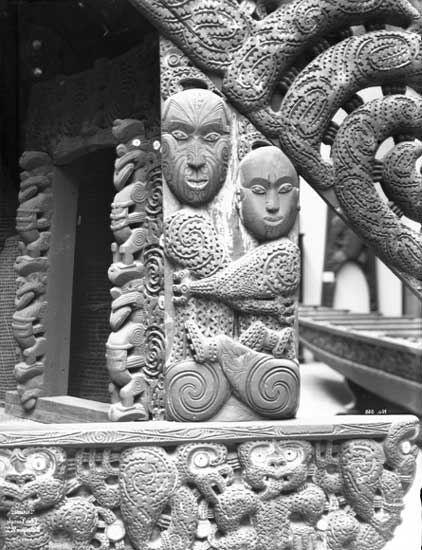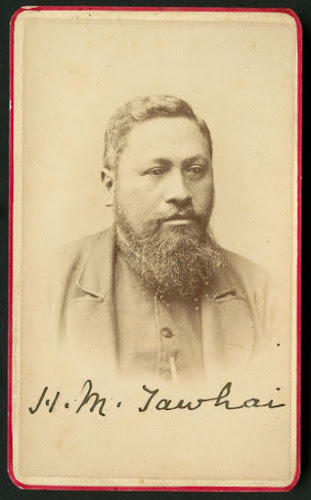Maori and the Race Relations Act 1971
When Bruce Stirling, Wally Penetito and I
put together The Treaty of Waitangi Companion: Maori and Pakeha from Tasman to Today (AUP) back in 2010 some
material never made the final text, simply for reasons of space. The Race
Relations Act 1971, passed into law on 17 December 1971, was one such topic. What
follows is our unedited entry on this (compiled by Bruce):
The Race Relations Bill was introduced with
some reluctance, with a view to implementing the United Nations International
Convention on the Elimination of Racial Discrimination, signed by the
government five years earlier. In its original form it was intended not so much
to protect Māori from the racism they had long endured but to eliminate the
Maori Affairs Department and all other special Maori agencies, furthering the
goals of existing assimilation policies. That was how the government perceived
its obligations to the UN, but Nga Tamatoa and the older leaders of the New
Zealand Maori Council lobbied the government to shift its focus to the forms of
racism affecting them.
1. The ‘best race relations in the world’ revisited
James Ritchie, ‘Race Prejudice – How much
here?’, New Zealand Listener, 17
April 1970.
The problem of prejudice in New Zealand
is the denial of prejudice. Our biggest problem is we do not know how serious a
problem we have.
2. Maori reject assimilation and seek
self-determination…
Dr Ranginui Walker and New Zealand Maori Council, ‘Manifesto of the New Zealand
Maori Council on the Race Relations Bill’, 1971.
…the Race Relations Bill represents an
opportunity to recapture the ideals embodied in the Treaty of Waitangi, and set
the course for the future of our nation. … the New Zealand Maori Council
submits that the urban migration has brought about a new challenge between
Maori and Pakeha. The present generation of Maori youth is putting to the test
our reputation for racial harmony and our ideal of racial equality. In order to
survive that test, the New Zealand Maori Council has made an exhaustive
analysis of the Race Relations Bill and reinterpreted it in relation to the
[UN] International Convention [on the Elimination of Racial Discrimination] and
the needs of the Maori people. Accordingly, the following principles are
embodied in our recommendations:
1.
The Maori people regard their
identity as sacrosanct. Although Maori share their country with a majority
group they reserve the right to be different.
2.
Maori social and cultural
institutions support their identity. Maori want self-determination within the
framework of their own institutions.
3.
For the Maori, equality with
the Pakeha means increased participation in the decision-making processes of
the country.
3. …linking the Race Relations Act to the Treaty…
Pei Te Hurunui Jones, ‘Manifesto of the New Zealand Maori Council on the
Race Relations Bill’, 1971.
If there is a Maori point of view emerging
in our submissions, it is that which asks for a legislative recognition and
support for Maori institutions, values, goals, organisations, and aspirations
so that the rights which the Maori people now have be not eroded deliberately or
unwittingly by legislation; legislation which affects all New Zealanders and is
assimilative by nature.
... it is our considered view that the Race
Relations Act be a charter of human relations at least as inspiring as the
first Race Relations Bill, the Treaty of Waitangi. The Maori people still seek
legal recognition of that Treaty, and a comparison of its intentions with those
of the Bill under review would show that the parallels are in fact close. One
of the intentions of the Treaty of Waitangi was to formalise relations between
two diverse groups and bring them under the mana of one sovereign. Another was
to protect those Maori interests which the Maori people did not want alienated.
4. …while a new generation of Maori express themselves
more bluntly
Nga Tamatoa, ‘Submission of Nga Tamatoa to
the Statues Revision Committee’, 1971.
The bill in its present form is sheer
tokenism, a pusillanimous gesture in an area where bold and intelligent
government is long overdue. At worst, it is a cheap and dirty insult both to
the UN and the Maori people of New
Zealand; a pandering to an international
reputation in the field of race relations which widely departs from domestic
realities. … Why is there no cohesive
Government policy in respect of the Maori people? … Integration is a
non-answer…it is a screen for the practise of an ostensibly forgotten doctrine
of assimilation.
…Nga Tamatoa is prepared to accept a Race
Relations Act but we will challenge any Bill which may be camouflage to deprive
Maori of their fundamental rights. This is such a Bill. ...We will NOT
be assimilated, we will NOT be discounted by your policies, and we are tired of
tolerating your political arrogance.
5. The first Race Relations Conciliator explains the
1971 Race Relations Act…
Race Relations Conciliator Sir Guy Powles
speaking to the 20th Conference of the Maori Women’s Welfare League,
Auckland, 1972, ‘Polynesians and the Law’, Te
Ao Hou, no. 72, 1973, pp.25-34.
The principle of this Act is that it is
unlawful to discriminate against any person by reason of his colour, race, or
ethnic or national origins. …The Act applies to four specific areas. The first
is access by the public to places, vehicles, and facilities. No one can, on the
ground of any person’s race or colour, refuse to allow that person to use any
place or vehicle which members of the public are allowed to use. Similarly, no
one may, on this ground, refuse to supply goods, facilities, or services to any
person: no one may, on this ground, refuse to employ any person: no on, on this
ground, may dismiss him. Finally, in the area of the land, housing, and other
accommodation, no one may, on this ground, refuse to lease or let any land,
house, or shop...
Finally, there is the over-riding provision
that nothing in the Act prevents anything being done if it is for the
assistance or the advantage of particular racial groups. This…protects that
wide range of the law…making special provision for the preservation and
advancement of various Maori institutions.
6. …and considers race relations in New Zealand
…how much racial discrimination is there in
New Zealand?
Some think that there is not very much, and nothing to worry about, and others
say that there is a great deal, much of which is under cover, not brought out
to light and yet just as socially harmful and causing just as much personal
distress, and that more publicity should be given to it. ...The Race Relations
Act 1971 has been deliberately passed by Parliament with the object of
uncovering discrimination if it exists, and of making a strong attack on it, if
it does exist, so that the law had indeed now been brought into play to help us
in the attainment of the ideals of a multi-racial society.
... Is there any racial discrimination in
housing matters in New
Zealand? I think you will agree with me that
there probably is. ...I know of several cases, not only in Auckland
but also in Wellington,
and a few days ago I heard of a case in Invercargill.
7. Subsequently, many complaints to the Race Relations
Conciliator come from Pākehā opposed to any special provision for Maori, but Maori
defend their parallel institutions
Ranginui Walker, ‘A Maori Parliament’, Listener, 28 September 1979.
The conventional wisdom would no doubt
condemn...a Maori Parliament as separatist, but this argument is merely a
rationalisation for the status quo. It also exemplifies the intellectual bind
of a monocultural person who insists on perceiving such an institution as
separatist instead of as a parallel system. ...While there are critics who would
abolish the Maori team on the grounds of separatism, they fail to perceive the
contribution that Maori rugby has made to the national game. ... Maori rugby is
inextricably part of New
Zealand rugby.
During the Second World War the Army
created the Maori War Effort Organisation to work with Maori tribal
committees... to raise thousands of pounds for the national cause. An even
greater contribution was made through the creation of a special unit known as
the Maori Battalion. ... Maori rugby, the King Movement, the Maori War Effort
Organisation and the Maori Battalion are examples of parallel institutions
where the Pakeha permitted some measure of self-determination and reaped
appropriate dividends.



Comments
Post a Comment